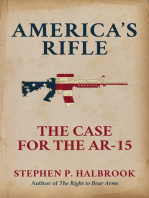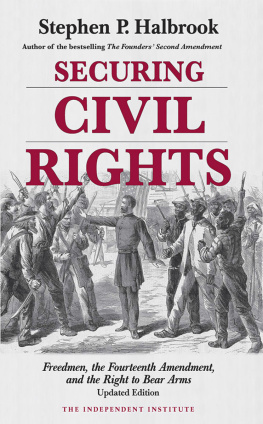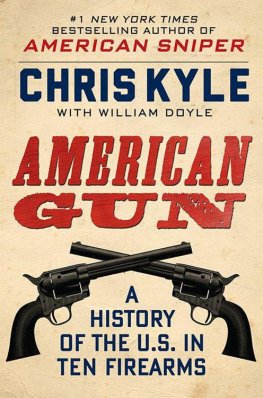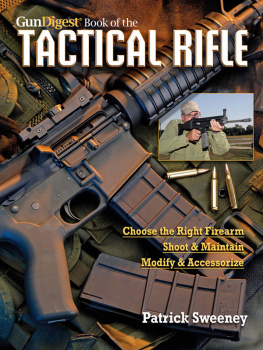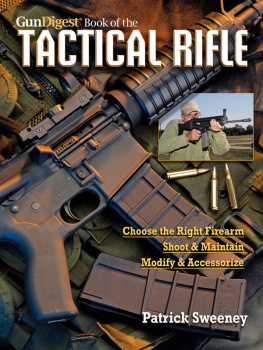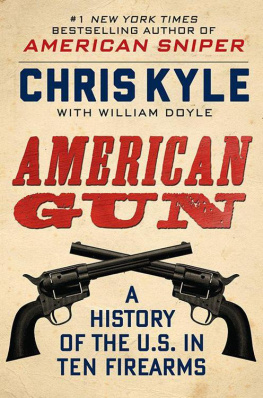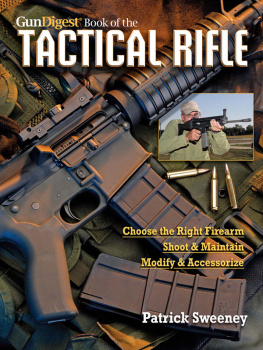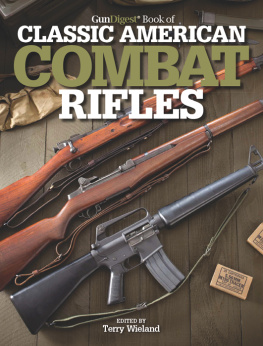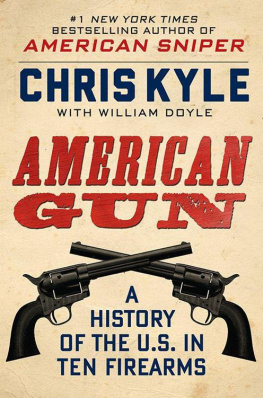Stephen P. Halbrook - Americas Rifle: The Case for the AR-15
Here you can read online Stephen P. Halbrook - Americas Rifle: The Case for the AR-15 full text of the book (entire story) in english for free. Download pdf and epub, get meaning, cover and reviews about this ebook. year: 2022, genre: Politics. Description of the work, (preface) as well as reviews are available. Best literature library LitArk.com created for fans of good reading and offers a wide selection of genres:
Romance novel
Science fiction
Adventure
Detective
Science
History
Home and family
Prose
Art
Politics
Computer
Non-fiction
Religion
Business
Children
Humor
Choose a favorite category and find really read worthwhile books. Enjoy immersion in the world of imagination, feel the emotions of the characters or learn something new for yourself, make an fascinating discovery.
- Book:Americas Rifle: The Case for the AR-15
- Author:
- Genre:
- Year:2022
- Rating:4 / 5
- Favourites:Add to favourites
- Your mark:
- 80
- 1
- 2
- 3
- 4
- 5
Americas Rifle: The Case for the AR-15: summary, description and annotation
We offer to read an annotation, description, summary or preface (depends on what the author of the book "Americas Rifle: The Case for the AR-15" wrote himself). If you haven't found the necessary information about the book — write in the comments, we will try to find it.
Americas Rifle: The Case for the AR-15 — read online for free the complete book (whole text) full work
Below is the text of the book, divided by pages. System saving the place of the last page read, allows you to conveniently read the book "Americas Rifle: The Case for the AR-15" online for free, without having to search again every time where you left off. Put a bookmark, and you can go to the page where you finished reading at any time.
Font size:
Interval:
Bookmark:
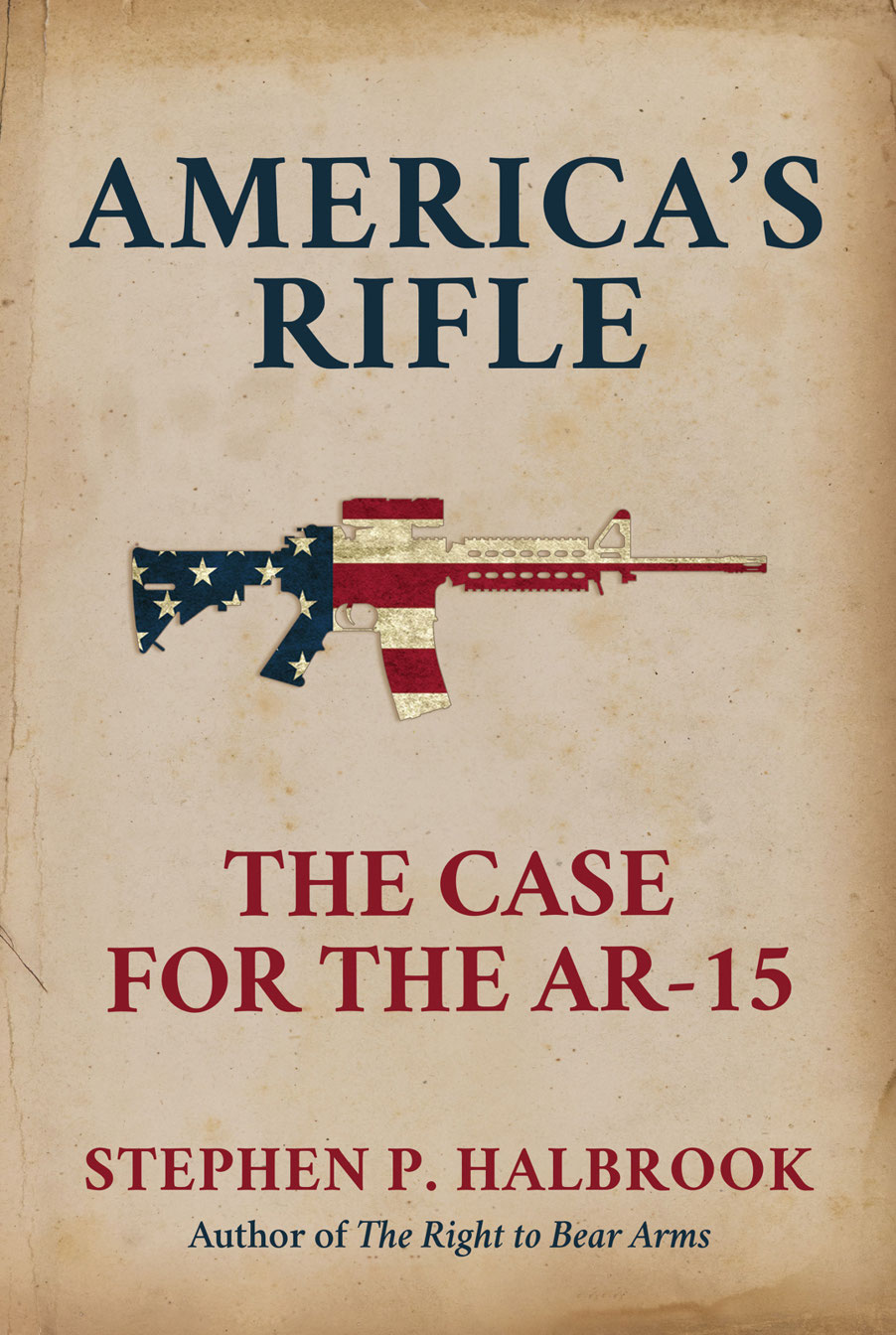
The Right to Bear Arms: A Constitutional Right of the People or a Privilege of the Ruling Class?
The Founders Second Amendment
Securing Civil Rights: Freedmen, the Fourteenth Amendment, & the Right to Bear Arms
That Every Man be Armed: The Evolution of a Constitutional Right
Firearms Law Deskbook: Federal and State Criminal Practice
A Right to Bear Arms
Gun Control in the Third Reich: Disarming the Jews and Enemies of the State
Gun Control in Nazi-Occupied France: Tyranny and Resistance
The Swiss and the Nazis
Target Switzerland: Swiss Armed Neutrality in World War II

Published by Bombardier Books
An Imprint of Post Hill Press
ISBN: 978-1-63758-680-8
ISBN (eBook): 978-1-63758-073-8
Americas Rifle:
The Case for the AR-15
2022 by Stephen P. Halbrook
All Rights Reserved
Cover Design by Tiffani Shea
Interior Design by Yoni Limor
No part of this book may be reproduced, stored in a retrieval system, or transmitted by any means without the written permission of the author and publisher.

Post Hill Press
New York Nashville
posthillpress.com
Published in the United States of America
The constitutions of most of our States assert, that all power is inherent in the peoplethat it is their right and duty to be at all times armed.
Thomas Jefferson to John Cartwright, June 5, 1824
This book goes to press in the wake of the Supreme Courts decision in New York State Rifle and Pistol Association v. Bruen, which invalidated New Yorks ban on carrying handguns as an infringement of the Second Amendment right of the people to bear arms and as lacking any analogous historical restriction on the right when the Amendment was adopted. As applicable to the subject of this work, the Court stated that even though the Second Amendments definition of arms is fixed according to its historical understanding, that general definition covers modern instruments that facilitate armed self-defense. The AR-15 semiautomatic rifle fits that definition perfectly.
After Bruen prompted an agonizing period of wailing and gnashing of teeth, Second Amendment opponents quickly set to work to suggest how the decision could be negated. They seized upon the Courts statement regarding analogous restrictions that unprecedented societal concerns or dramatic technological changes may require new approaches as long as they are still consistent with the text. They revised history to say that homicide was not a major problem at the Founding but that violent crime in todays society justifies gun bans. The argument fits superficially with the drive to prohibit and confiscate modern firearms like the AR-15.
Lets ignore that, by the plain text of the Amendment, a gun ban infringes on the right of the people to keep and bear arms. Far from being idyllic, Americas Founding was characterized by widespread and horrific conflict with warring Native Americans, a tyrannical Crown, invading European armies, and vicious criminals. As Justice Anthony Kennedy famously asked in oral argument in the Heller case, It [the Second Amendment] had nothing to do with the concern of the remote settler to defend himself and his family against hostile Indian tribes and outlaws, wolves and bears and grizzlies and things like that?
In 1622, as described below in chapter 5, almost the entire population of Jamestown was massacred by Powhatan warriors. Over 150 years later, after clashes in western Virginia in 1774, James Madison wrote that the attacking Indians were determined in the extirpation of the inhabitants. The Declaration of Independence charged that the King endeavoured to bring on the Inhabitants of our Frontiers, the merciless Indian Savages, whose known Rule of Warfare, is an undistinguished Destruction, of all Ages, Sexes and Conditions.
The Declaration continued that George III has plundered our Seas, ravaged our Coasts, burnt our Towns, and destroyed the Lives of our People, in circumstances of Cruelty and Perfidy, scarcely paralleled in the most barbarous Ages.
Throughout the seventeenth century in colonial America, the peacetime murder rates for adult colonistsranged from 100 to 500 or more per year per 100,000 adults, ten to fifty times the rate in the United States today. In the next century, Britain exported some fifty thousand convicted criminals to America. During the revolutionary war, a coastal area of New Jersey known as the Pines was infested with numerous robbers, who in the dead of nightwould sally forth from their dens to plunder, burn, and murder. Homicide rates skyrocketed from the revolutionary period through the War of 1812.
Justice William Bradford of the Pennsylvania Supreme Court wrote in 1793 that homicides have been very frequent. Further, about three-fourths of the convictions of robbery and burglarytook place in Philadelphia, where a large class of men consider theft as a regular vocation. A modern study found that from 1720 to 1780, the homicide rate in colonial Philadelphia exceeded the highest rate in the nineteenth century. That alone impeaches the theory that advances in firearm technology promote crime, for the mostly single-shot firearms of the eighteenth century were replaced by repeating firearms in the nineteenth century.
So much for the claim that Second Amendment rights could be recognized at the supposedly-peaceful Founding, but that modern crime justifies infringement on the very right protected by its plain text. To muddy the text, Second Amendment opponents argue that its not very plain after all. Specifically, the term infringe is allegedly so weak that gun bans do not infringe on the right at all, in contrast with the strong meaning of abridge in the First Amendments prohibition on laws abridging the freedom of speech.
But no substantive difference exists between the meanings of abridge and infringe. Samuel Johnsons 1755 dictionary defined infringe as To violate; to break laws or contracts and To destroy; to hinder. Similarly, it defined abridge as To contract, to diminish, to cut short. Per Noah Websters 1828 dictionary, A princeinfringes an agreement or covenantby doing what is stipulated not to be done. Or as stated by Richard Burn in his 1792 law dictionary: But every wanton and causeless restraint of the will of the subject, whether practiced by a monarch, a nobility, or a popular assembly, are a degree of tyranny, and destructive of liberty.
The Supreme Court uses abridge and infringe synonymously. In a First Amendment case, it referred to the plaintiffs as persons who seek legal redress for infringements of their constitutionally guaranteed and other rights. It has asked whether a tax on disseminating ideas would infringe the right of free speech, and whether the due process clause forbids the states to infringe personal liberties guaranteed by the Bill of Rights. No basis exists to claim that the prohibition on infringement is a weaker standard than the prohibition on abridgment.
Another post-Bruen argument being made to dilute the Second Amendment is to view its protections as understood in 1868, when the Fourteenth Amendment was adopted, rather than as understood in 1791, when the right to bear arms was enshrined in the Bill of Rights. The power to restrict firearms was supposedly perceived to be greater in 1868 and in the decade that followed. As proof, the argument goes, in 1868 Texas subjected its constitutional guarantee of the right to bear arms to the weak standard of allowing such regulations as the legislature may prescribe.
Next pageFont size:
Interval:
Bookmark:
Similar books «Americas Rifle: The Case for the AR-15»
Look at similar books to Americas Rifle: The Case for the AR-15. We have selected literature similar in name and meaning in the hope of providing readers with more options to find new, interesting, not yet read works.
Discussion, reviews of the book Americas Rifle: The Case for the AR-15 and just readers' own opinions. Leave your comments, write what you think about the work, its meaning or the main characters. Specify what exactly you liked and what you didn't like, and why you think so.

